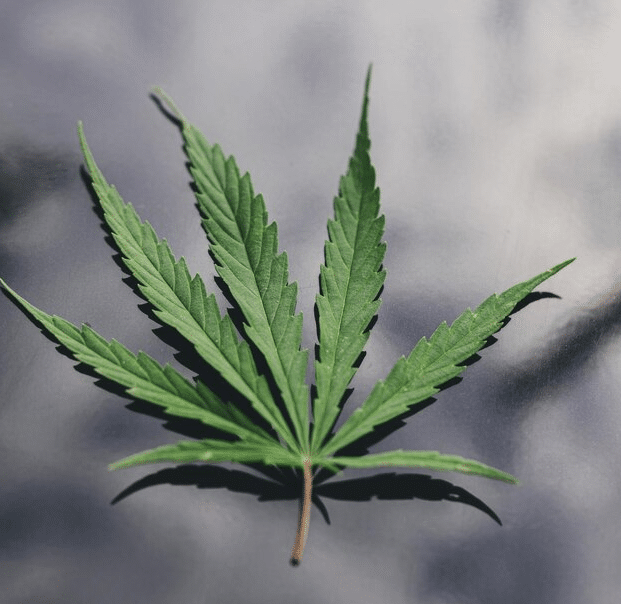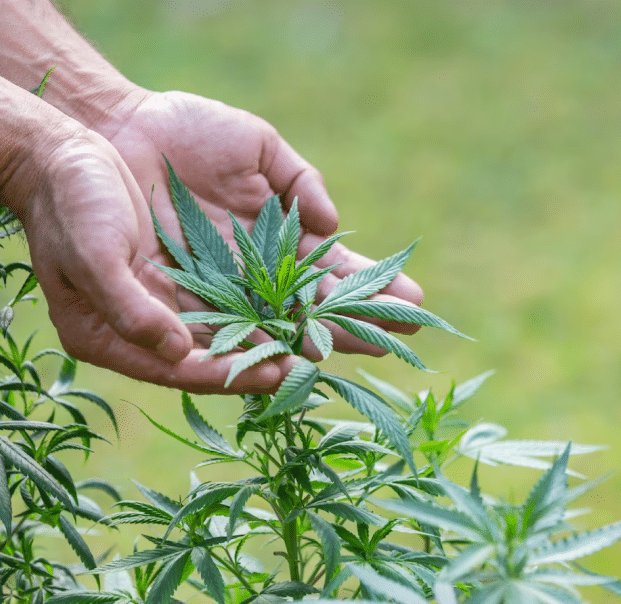Historical Context
This article is a deep dive into the process of obtaining a cannabis license in Alaska. So, keep reading to find out all the regulations and requirements necessary to set up your cannabis business in the Last Frontier.
Types of Cannabis Licenses in Alaska
Cultivation Licenses
Permits for growing cannabis, with various tiers based on facility size and growing conditions.
Manufacturing Licenses
Allows for processing cannabis into various products, including extracts and edibles.
Retail Licenses
Enables the operation of dispensaries and delivery services for medical and/or recreational use.
Distribution Licenses
Required for transporting cannabis products between licensed facilities.
Cultivation Licenses
Standard and Limited licenses. No statewide cap. $5,000 annual fee for standard.
Back to the TopManufacturing Licenses
Product Manufacturing Facility license. $1,000 application fee. $5,000 annual fee.
Back to the TopHow to Obtain a Cannabis License in Alaska
1. Research and Prepare
The first step of your licensing journey is thorough preparation and research. Familiarize yourself with the application process and its requirements, ensuring you understand each step involved.
It’s essential to gather information on licensee eligibility criteria, including residency permits and background checks.
In Alaska, the laws and regulations regarding commercial cannabis may vary among different cities and counties. So, researching the local jurisdiction to determine whether commercial cannabis activities are permitted in your area is essential.
You must also obtain all the necessary local permits and approvals before initiating the next stages of your Alaskan cannabis license application.
2. Develop a Solid Business Plan
Developing a thorough and detailed business plan is important to ensure the success of your cannabis business. Here are a few things to include in your comprehensive plan.
- Company Description and Branding— This includes providing a clear and apt description of your company and its uniqueness in the Alaska Cannabis industry.
- Operating Agreement and Organizational Structure— This refers to the legal structure of your business and defines the roles and responsibilities of all the team members.
- Market Analysis— A thorough analysis of the Alaska cannabis market will help to identify target demographics, market trends, and potential competitors.
- Sales and marketing strategy— This covers your marketing strategy and plans for attracting customers.
- Financial projections and Budgets— This includes creating budgets and cash flow projections.
- Security measures— Safeguard your business by taking all the necessary security measures,
- Team Management and Organization— Describe your business’ management structure, including the team members and their roles.
- Risk management strategies— Identify the potential risks in the Alaskan cannabis industry and find strategies to deal with them.
- Compliance strategies— Ensure you’re up to date with the latest compliance obligations in the State and follow them.
Note: It’s highly advisable to seek professional legal and business assistance when developing your business plan as a beginner to maximize your chances of success.
3. Assemble the Necessary Documentation
Applying for an Alaska cannabis license requires considerable time and effort. The process has several steps, and you’ll need to submit fingerprints of all persons with financial interests, an operating plan, proof of notifying the city council about the proposal, and much more.
Here’s a general list of documents you must submit to get a cannabis license in the state.
- Online Application
- Application Certifications (Form MJ-00)
- Marijuana Establishment Operating Plan (Form MJ-01)
- Premises Diagram (Form MJ-02)
- Local Government Notice Affidavit (Form MJ-08)
- Public Notice Posting Affidavit (Form MJ-07)
- Publisher’s Affidavit
- Statement of Financial Interest (Form MJ-09)
- Proof of Possession of Proposed Premises
- Fingerprint Cards
- Entity Documents
- Fingerprint Fees
- Application Fee (approximately $1,000 for a license).
Based on the type of license you choose, you may need to submit additional documents. Mentioned below are the additional items you must submit for your license application to be reviewed by a Licensing Examiner.
1) Retail Marijuana Store Applications
- Retail Marijuana Store Operating Plan Supplemental
- Food Safety Permit
2) Standard/Limited Marijuana Cultivation Facility Applications
- Marijuana Cultivation Facility Operating Plan Supplemental
3) Marijuana Product/Concentrate Manufacturing Facility Applications
- Marijuana Product Manufacturing Facility Operating Plan Supplemental
- Food Safety Permit
4) Marijuana Testing Facility Applications
- Marijuana Testing Facility Operating Plan Supplemental
4. Submitting the Application
After assembling the required documents, you can fill out and submit your application to get an Alaska cannabis license.
You can fill out your online application from the Marijuana License Application page. Select the “Initiate Marijuana License” option. This will open the myAlaska page, and you must log in with valid credentials or create a new account.
After this, simply enter your Alaska business license number and generate a new license application. The AMCB has released detailed video tutorials on filling out the application. You may also check them out before applying.
The application for a new marijuana license will include your personal details (name, mailing address, social security number, etc.) and business information (business name, sole proprietorship or partnership, etc.).
When initiating a new marijuana license in Alaska, you must also provide public notice of the application. This involves the following steps:
- Post a copy of the public notice form at the proposed licensed premises for ten days. You must also display the copy at another conspicuous nearby location (bulletin board, grocery store, post office, etc) for ten days.
- Publish an announcement in a newspaper once a week for three weeks consecutively. If there is no newspaper in your area, you can opt for broadcasting the announcements on a radio station that serves the local area
- You must send a copy of this public notice to the local government and community council.
The public notice form should include the following information,
- Applicant’s name
- The name and location of your chosen premises
- The license or endorsement type applied for
- A statement stating that the public can submit comments or objections to the board.
After successfully completing the public notice process, the next step in the license application process is to fill out supplemental forms for your specific license type. These forms may include your operating plans and various affidavits. Then, submit the fingerprints and fees to complete your application.
Applying for a cannabis license in Alaska is a detailed and comprehensive process. So, make sure to complete it with maximum care and accuracy. Take your time and double-check all your information to avoid errors.
Remember, a well-prepared application will reflect your commitment to compliance and professionalism, making it more likely to get accepted.
Application Review and Compliance Inspection
After you submit your application, the Alaska Marijuana Control Board reviews it thoroughly to assess its completeness and compliance with regulations. During this stage, you may be requested to submit additional documentation or information to evaluate your application further.
This whole reviewing process can take a few months. After the AMCB has deemed your application complete, you must follow another list of steps. This includes passing a METRC training class, getting a marijuana handler permit, and registering to pay the excise taxes.
Before obtaining your license, you will also undergo compliance inspections by the (AMCB) and other relevant agencies. These inspections ensure that your business and its operations align with state regulations, laws, and safety standards. Areas such as security measures, sanitation, record-keeping, and inventory management, may also be examined to ensure compliance.
To pass these inspections and get your license, you should have a comprehensive understanding of state and county cannabis regulations and ensure your business follows them.
Regular internal compliance audits help in identifying and addressing areas of non-compliance within your operations. Through these audits, you can fix any issues before the official inspections take place and increase your chances of passing the compliance assessments.
Maintaining open and ongoing communication with the AMCB throughout the licensing process is also vital. It is essential to promptly respond to any inquiries or requests for additional information from the AMCB and keep them posted on any developments and changes to your application.
Risk and Compliance Factors From AlphaRoot
The cannabis industry, while burgeoning with opportunities, is not without its complexities and inherent risks. Understanding and mitigating these risks is crucial for long-term success. AlphaRoot, a prominent insurance and risk management firm specializing conduct business in the cannabis sector, sheds light on the key risk and compliance factors
1. Regulatory and Legal Risks
Labyrinthine Regulations The cannabis industry is highly regulated, and compliance with state and local laws is paramount for cannabis establishments. Navigating the intricate web of regulations, which can vary significantly from one jurisdiction to another, poses a substantial challenge for cannabis establishments. Failure to comply can result in fines, license revocation, or legal consequences.
Federal Ambiguity Cannabis remains illegal at the federal level in the United States, despite state-level legalization of recreational marijuana. This dichotomy creates uncertainties and exposes businesses that sell recreational marijuana here to potential federal enforcement actions.
2. Financial Risks
Cash-Intensive Operations Due to federal banking restrictions, many cannabis businesses operate primarily in cash. This not only presents security risks but also complicates financial management and taxation.
Taxation Challenges Cannabis businesses face unique tax challenges, including limitations on deductions and potential audits. Understanding and complying with tax regulations is essential to avoid financial penalties.
3. Security Risks
Theft and Robbery Cannabis businesses are susceptible to theft and robbery due to the high value of their products. Implementing robust security measures at a marijuana cultivation facility, including surveillance systems and secure storage, is vital to mitigate these risks.
Cybersecurity As with any industry, cannabis businesses are vulnerable to cyberattacks. Protecting sensitive customer data and business information is critical.
4. Product Liability and Quality Control
Product Liability Claims Ensuring the safety and quality of cannabis products is crucial to prevent product liability claims. Contaminated or mislabeled products can lead to legal and financial repercussions.
Testing and Quality Assurance Collaborating with reputable independent testing laboratory and facilities, as required by regulations, is essential to verify the safety and potency of cannabis products. Consistent quality control is essential to maintain consumer trust.
5. Market Competition and Volatility
Saturated Markets in regions with a high concentration of cannabis businesses, competition can be fierce. Navigating market saturation requires effective differentiation and marketing strategies.
Price Volatility The price of cannabis products can fluctuate significantly, impacting profitability. Businesses must adapt to market dynamics and price changes.
6. Environmental and Sustainability Concerns
Resource Intensity Cannabis cultivation and processing can be resource-intensive, including water and energy consumption. Businesses need to address sustainability concerns and adhere to environmental regulations.
Waste Management Proper waste disposal and recycling practices are essential to minimize environmental impact and meet regulatory requirements.
7. Talent and Workforce Challenges
Talent Shortages the cannabis industry often faces challenges in recruiting and retaining qualified personnel due to its specialized nature. Employee turnover can disrupt operations.
Training and Compliance Businesses must invest to ensure employees are well-informed about compliance and safety protocols.
About the Author

AlphaRoot Team
The AlphaRoot marketing team are seasoned experts with deep knowledge of the cannabis industry. Our informative articles help cannabis businesses thrive in a competitive landscape. From compliance to insurance tips, we’re dedicated to providing advice tailored to your needs.




